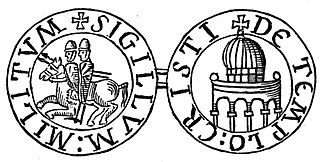
The Poor Fellow-Soldiers of Christ and of the Temple of Solomon, also known as the Order of Solomon's Temple, the Knights Templar, or simply the Templars, was a military order of the Catholic faith, and one of the wealthiest and most popular military orders in Western Christianity. They were founded circa 1119, headquartered on the Temple Mount in Jerusalem, and existed for nearly two centuries during the Middle Ages.
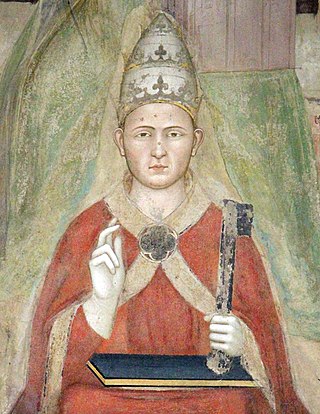
Pope Clement V, born Raymond Bertrand de Got, was head of the Catholic Church and ruler of the Papal States from 5 June 1305 to his death, in April 1314. He is remembered for suppressing the order of the Knights Templar and allowing the execution of many of its members. Pope Clement V was the pope who moved the Papacy from Rome to Avignon, ushering in the period known as the Avignon Papacy.

The Avignon Papacy was the period from 1309 to 1376 during which seven successive popes resided in Avignon rather than in Rome. The situation arose from the conflict between the papacy and the French crown, culminating in the death of Pope Boniface VIII after his arrest and maltreatment by Philip IV of France. Following the subsequent death of Pope Benedict XI, Philip forced a deadlocked conclave to elect the French Clement V as pope in 1305. Clement refused to move to Rome, and in 1309 he moved his court to the papal enclave at Avignon, where it remained for the next 67 years. This absence from Rome is sometimes referred to as the "Babylonian captivity of the Papacy".
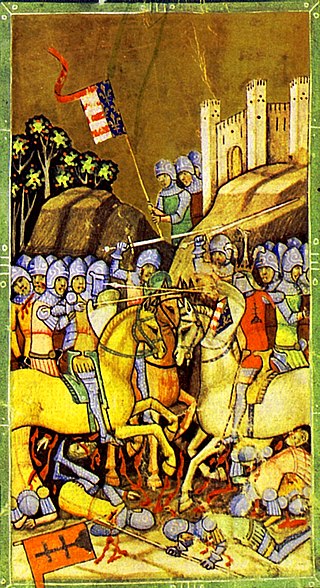
Year 1312 (MCCCXII) was a leap year starting on Saturday of the Julian calendar.

Jacques de Molay, also spelled "Molai", was the 23rd and last grand master of the Knights Templar, leading the order sometime before 20 April 1292 until it was dissolved by order of Pope Clement V in 1312. Though little is known of his actual life and deeds except for his last years as Grand Master, he is one of the best known Templars.
Omne datum optimum was a papal bull issued by Pope Innocent II on 29 March 1139 that endorsed the Order of the Poor Knights of Christ and of the Temple of Solomon, in which the Templar Rule was officially approved, and papal protection given.

The Council of Vienne was the fifteenth ecumenical council of the Catholic Church and met between 1311 and 1312 in Vienne, France. One of its principal acts was to withdraw papal support for the Knights Templar at the instigation of Philip IV of France. The Council, unable to decide on a course of action, tabled the discussion. In March 1312 Philip arrived and pressured the Council and Clement to act. Clement passed papal bulls dissolving the Templar Order, confiscating their lands, and labeling them heretics.

The Military Order of Christ is the former order of Knights Templar as it was reconstituted in Portugal. Before 1910, it was known as the Royal Military Order of Our Lord Jesus Christ, and the Order of the Knights of Our Lord Jesus Christ. It was founded in 1319, with the protection of King Denis of Portugal, after the Templars were abolished on 22 March 1312 by the papal bull, Vox in excelso, issued by Pope Clement V. King Denis refused to pursue and persecute the former knights as had occurred in most of the other sovereign states under the political influence of the Catholic Church.
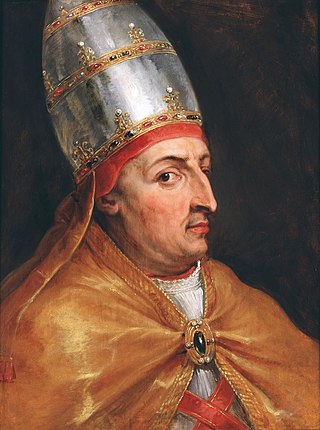
Dum Diversas is a papal bull issued on 18 June 1452 by Pope Nicholas V. It authorized Afonso V of Portugal to conquer Saracens and pagans and consign them to "perpetual servitude". Pope Calixtus III reiterated the bull in 1456 with Inter caetera, renewed by Pope Sixtus IV in 1481 and Pope Leo X in 1514 with Precelse denotionis. The concept of the consignment of exclusive spheres of influence to certain nation states was extended to the Americas in 1493 by Pope Alexander VI with Inter caetera.

The Supreme Order of Christ is the highest order of chivalry that can be awarded by the pope. No appointments have been made since 1987 and following the death in 1993 of the last remaining knight, King Baudouin of Belgium, the order became dormant.
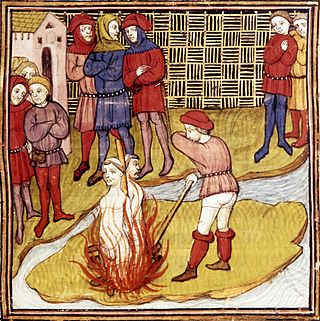
The Poor Fellow-Soldiers of Christ and the Temple of Jerusalem, or Templars, was a military order founded in 1119/20.
In 1128, the cousin of St Bernard of Clairvaux, Hugues de Payens, met King David I in Scotland. The Order established a seat at Balantrodoch, now Temple, Midlothian on the South Esk. In 1189, Alan FitzWalter, the 2nd Lord High Steward of Scotland was a benefactor of the Order.
Pastoralis praeeminentiae was a papal bull issued by Pope Clement V on 22 November 1307 to all Christian monarchs. It ordered the arrest of all Knights Templar and to seize their properties on behalf of the church. Clement was forced to support the campaign against the Templars by Philip IV of France, who owed them a great deal of money and had initiated the first arrests against the Templars on 13 October 1307.
Vox in excelso is the name of a bull issued by Pope Clement V on 22 March 1312. The directives given within the bull were to formally dissolve the Order of the Knights Templar, effectively removing papal support for them and revoking the mandates given to them by previous popes in the 12th and 13th centuries.
In view of the suspicion, infamy, loud insinuations and other things which have been brought against the order ... and also the secret and clandestine reception of the brother of this Order; in view, moreover, of the serious scandal which has arisen from these things, which it did not seem could be stopped while the Order remained in being, and the danger to faith and souls, and the many horrible things which have been done by the very many of the brothers of this Order, who have lapsed into the sin of wicked apostasy, the crime of detestable idolatry, and the execrable outrage of the Sodomites ... it is not without bitterness and sadness of heart that we abolish the aforesaid Order of the Temple, and its constitution, habit and name, by an irrevocable and perpetually valid decree; and we subject it to perpetual prohibition with the approval of the Holy Council, strictly forbidding anyone to presume to enter the said Order in the future, or to receive or wear its habit, or to act as a Templar.

Temple is a village and civil parish in Midlothian, Scotland. Situated to the south of Edinburgh, the village lies on the east bank of the river South Esk.

The Knights Templar trace their beginnings to the Latin Kingdom of Jerusalem in c. 1120 when nine Christian knights, under the auspices of King Baldwin II and the Patriarch Warmund, were given the task of protecting pilgrims on the roads to Jerusalem, which they did for nine years until elevated to a military order at the Council of Troyes in 1129. They became an elite fighting force in the Crusades known for their propensity not to retreat or surrender.
Faciens misericordiam was a papal bull issued by Pope Clement V on August 12, 1308, as part of the trial against the Knights Templar. It called for a new Ecumenical council to be held in 1310, and set out some structure for the collection of depositions from the arrested Templars.
The history of the Knights Templar in England began when the [English]] nobleman Hughes de Payens, the founder and Grand Master of the order of the Knights Templar, visited the country in 1128 to raise men and money for the Crusades.
The orders, decorations, and medals of the Holy See include titles, chivalric orders, distinctions and medals honoured by the Holy See, with the Pope as the fount of honour, for deeds and merits of their recipients to the benefit of the Holy See, the Catholic Church, or their respective communities, societies, nations and the world at large.
The Council of Troyes was convened by Bernard of Clairvaux on 13 January 1129 in the city of Troyes. The council, largely attended by French clerics, was assembled to hear a petition by Hugues de Payens, head of the Knights Templar. Pope Honorius II did not attend the council, sending the papal legate, Matthew, cardinal-bishop of Albano. The council addressed issues concerning the Templar Order and a dispute between the bishop of Paris and king of France.













